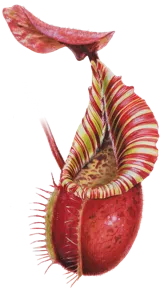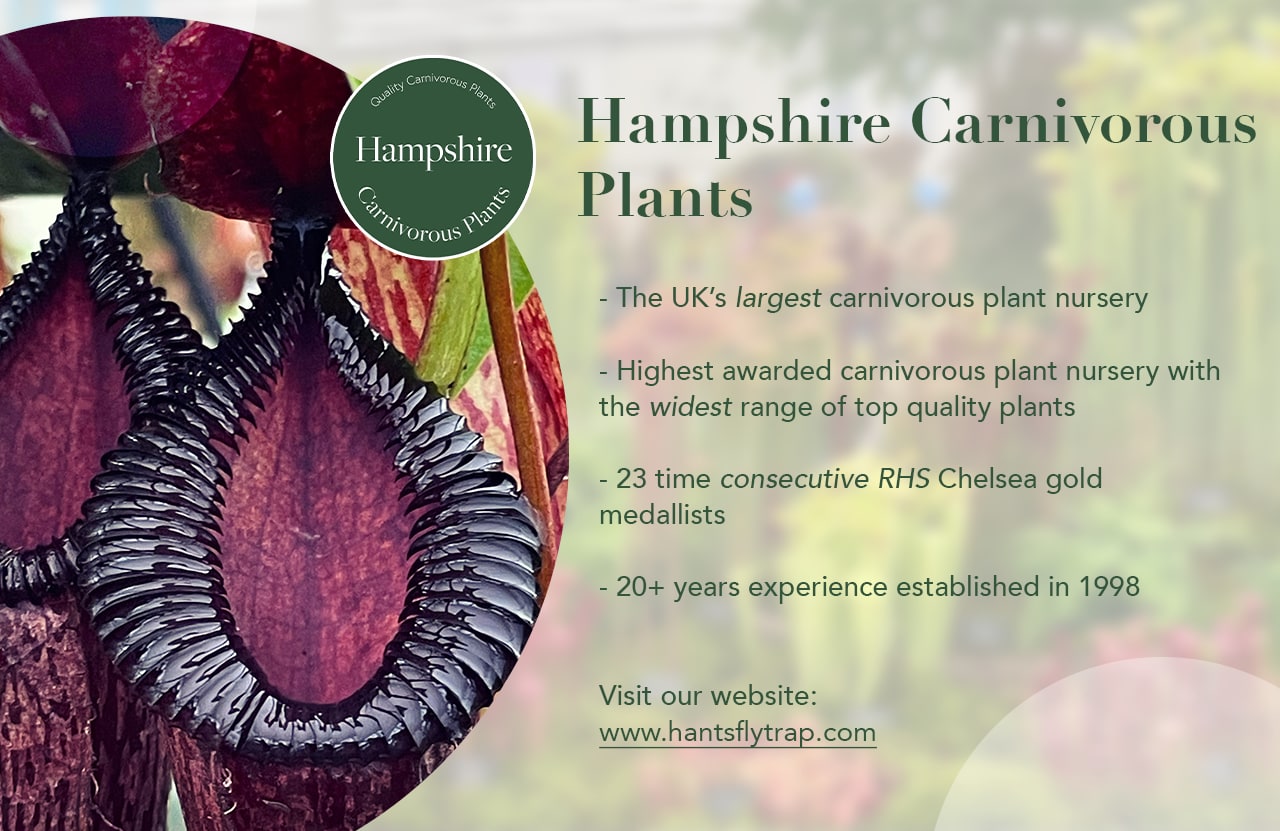Nepenthes veitchii x burbidgeae
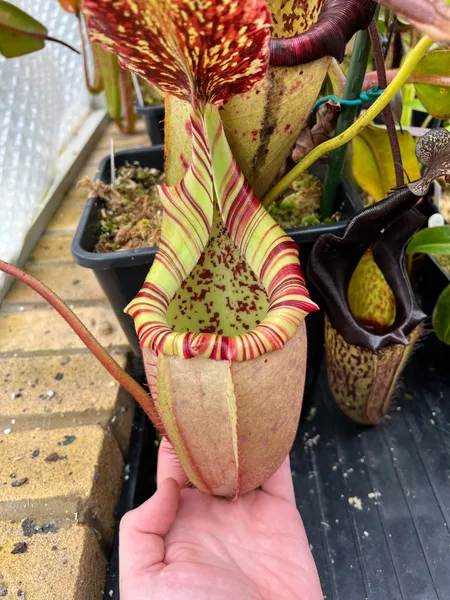 A smaller spring pitcher on my plant from Exotica in Australia
A smaller spring pitcher on my plant from Exotica in Australia 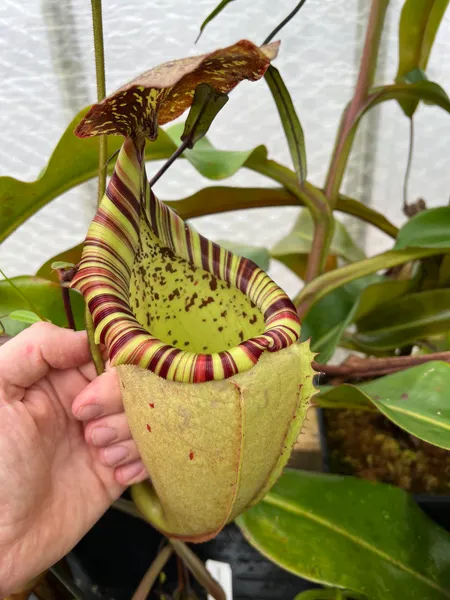 Intermediate-to-upper pitcher - I love the tri-colored peristome on this cross
Intermediate-to-upper pitcher - I love the tri-colored peristome on this cross 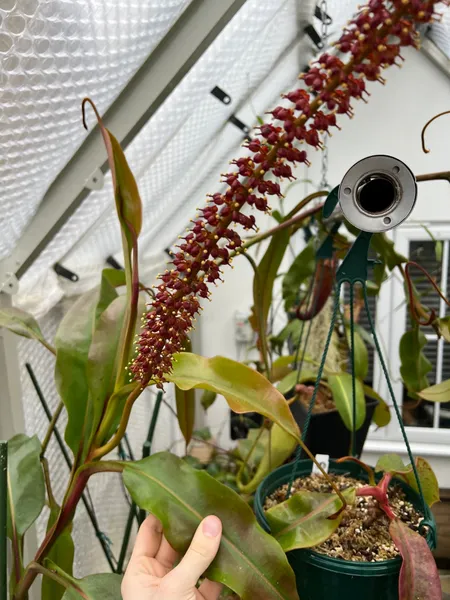 It's also a male!
It's also a male! 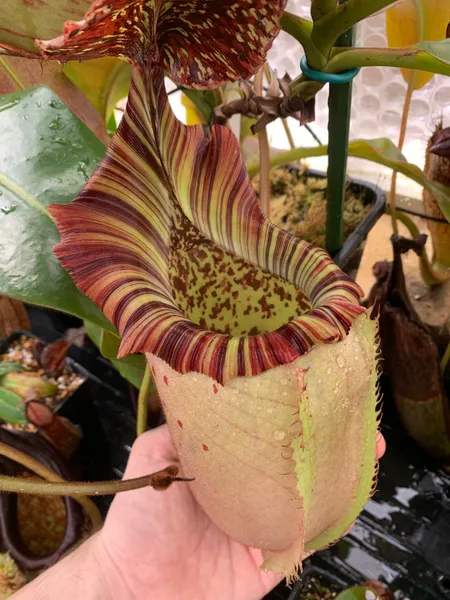 Probably the biggest pitcher by volume that I've ever grown!
Probably the biggest pitcher by volume that I've ever grown! 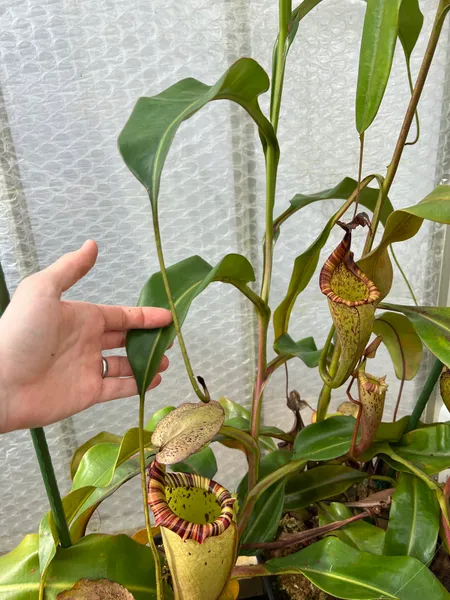 This one's started vining, and is now a very fast grower. That's N. maxima on the right
This one's started vining, and is now a very fast grower. That's N. maxima on the right 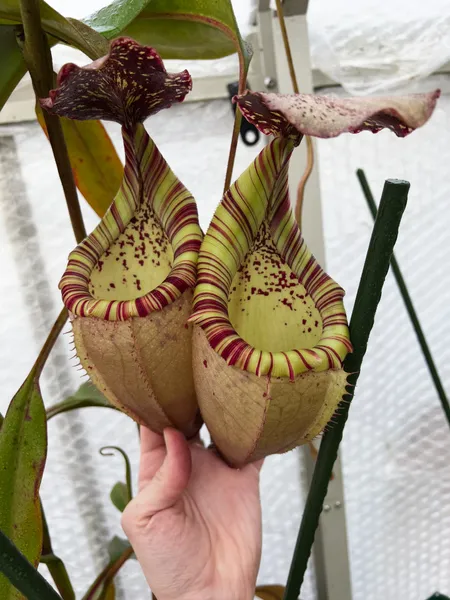 Two nice uppers pitchers
Two nice uppers pitchers Description & Care
N. veitchii × burbidgeae is an stunning cross between two Borneo natives. I’ve found it to be a tolerant and forgiving plant that does best during the warmer times of year, similar to its parents. It produces pitchers with the size and shape of N. burbidgeae, with color and peristome reminiscent of N. veitchii. The pitchers have a yellow or pink body, and a tri-colored peristome of yellow, red, and maroon. By volume its lower pitchers are the largest I’ve ever grown.
This cross has been produced several times, most notably by Exotica Plants in Australia and Borneo Exotics in Sri Lanka. Mine is from Exotica, specifically their 2018 release. It grew fairly slowly until it started vining - now it’s rapidly heading for the rafters and has since flowered male.
I’d recommend this cross for anyone who’s a fan of N. veitchii hybrids, as I am, and whose conditions lean more towards intermediate than true highland. Just make sure you have plenty of space!
How I Grow It
| Media | Long fibre sphagnum moss, perlite, and - optionally - orchid bark (2:1:1). |
| Water | Damp but not wet. |
| Light | Very bright, diffused light. |
| Fertiliser | Maxsea or liquid orchid feed in the pitchers, every two weeks. |
| Temperatures | 12°C (54°F) minimum year-round, with summer highs of ~ 30°C (86°F). |
| Humidity | 70% during the day, rising to over 90% at night. |
Learn more about cultivation with my guide to growing Nepenthes.
Day & Night Temperatures
The female parent - Nepenthes veitchii - is a widely distributed species found at elevations of between 0 and 1600 meters. The male parent - Nepenthes burbidgeae - is a highland species found at elevations of between 1200 and 1800 meters.
On average, the hybrid N. veitchii x burbidgeae is likely to grow best with temperatures of approximately 24 - 32°C during the day, and 14 - 22°C at night. This range is highlighted in purple above. For further guidance on the cultivation requirements of hybrids, try out my Nepenthes Interactive Guide .
Buying N. veitchii x burbidgeae
| Availability | The BE release is widely available. The EP grex (which is what I grow) is much harder to come by. |
| Borneo Exotics codes |
|
| Recommended nursery | California Carnivores Hampshire Carnivorous Plants |
See Also
I've written profiles of these related hybrids:
